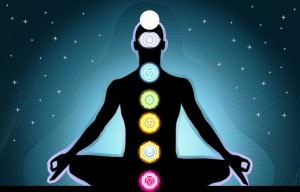 By: Rea Nolan Martin / Source: Awaken
By: Rea Nolan Martin / Source: Awaken
My husband has been lugging a hardy split-leaf philodendron state to state, house to house since 1975.
We call it the monster, because no matter how much we ignore it, it refuses to die, and worse, seems to nearly double its foliage every year. Since we’ve recently downsized, there’s little room in our home for such grandiosity.
At earliest sign of spring the monster is dragged outdoors to the patio where Mother Nature nurtures it at her whim. Since it unfailingly thrives, we reluctantly drag it back in at first frost.
It had grown so much by the end of summer 2014 that my husband decided to cut it in half. Instead of tossing the offshoot into the river at my suggestion, he secretly potted it and presented it to me as a gift.
“You must be kidding,” I said. “We barely have room for the mother.”
“Let’s just put it in the bedroom and see what happens,” he said. “Maybe it won’t grow.”
He is such an enabler.
Conducting a quick tour of the bedroom, anyone could see there was no room for a plant with this much ambition. Alas, he found a dark corner behind the door of the master bath next to the tub.
“This will do until spring,” he said, plopping it down. I watched helplessly, hoping the monster clone would hate it there, wither and die.
But no such luck.
Less than a week later, leaf after giant, brand new, spring-green leaf shot three feet up and unfurled in a mocking fashion. As upset as I was, I couldn’t help but admire the core strength and bodacious vitality of this invader — just the self-confidence!
Soon I would be climbing around it to get into the tub. As the weeks wore on, I began to feel a certain weird intimacy with it that messed with my conscience.
I could feel myself mentally backtracking on my scheme to kill it with malign neglect. Guilt unfurled in the pit of my stomach with each new leaf, and three weeks in, I broke down and watered it.
The following week during a blizzard, I opened the slats of the plantation shutters behind the tub to create enough light to apply my makeup. The slats were generally left closed for privacy reasons, but I figured on such a dark, blustery day, no one was likely to stop by.
I left them open. Later on when I reentered the room, I could see that every new leaf of the monster clone had traveled intentionally toward the window, bending dramatically to reach the light between the slats.
I was in awe. This thing was alive in a way I hadn’t considered. It seemed to possess not the passive sort of awareness we tend to ascribe to the plant kingdom, but an active, opportunistic intelligence.
I realized then that on the most fundamental level my needs and the needs of this goliath were the same.
We both sought light.
This plant’s stubborn determination to stop at nothing to express itself has had a surprising effect on me. In a way, it’s helped me to expand my own horizons.
Gradually backing down from my former bias, I was able to appreciate so much about my cellmate, like its wildly verdant vitality against the backdrop of winter desolation. Its survival instinct alone staggered me.
Over the years (and especially this last year) I’ve learned that the more we evolve into our authentic selves, the greater our connection to the animal, plant and mineral kingdoms that surround us.
Attuning ourselves to higher purpose, we resonate with the elements of nature that have been placed in our care. (Everything has been put in our care.)
The more we evolve, the more we understand that all living thing are imbued with the breath of creation. This unwanted stepchild of a plant exchanged breath with me — my carbon dioxide for its oxygen. Ultimately, I was at its mercy as much as it was at mine.
What did I learn from my interloper? Four things I can think of offhand:
1) Be yourself unashamedly.
2) Be patient with your caretakers.
3) Thrive where you’re planted.
4) Always move into the light.
Sometimes you have to come face-to-face in a tight spot with a big obstacle before you figure out its lesson. It’s nearly spring now, time to drag it back out to the patio. I wonder if I will.



